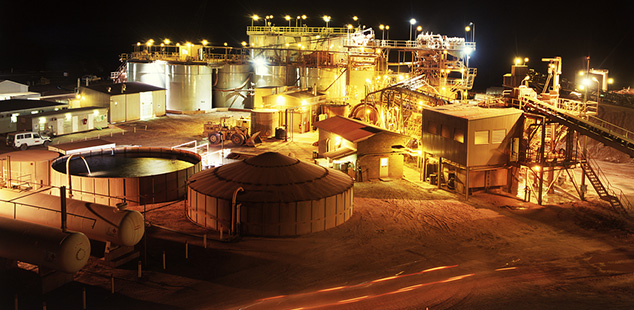
While most nations have some gold mines, a select few are richer in the precious metal than others. A brief look at some of the top gold mining nations on the globe.
The history of gold stretches almost as far back into the past as the history of civilization. Humans have long since realized the value of gold, both for decoration and for currency, due to the metal’s rarity, luster, and ease of exchange. During the Roman Empire, most gold that circulated through the hands of merchants came from mines in Spain; 1,000 years later when the Spanish colonized Latin America, they operated huge mines out of modern-day Mexico. Today, the focus of gold mining has shifted farther to the south than at any other time in the history of mining. Let’s take a look at some of the prominent gold mining countries today.
Top Gold Producing Countries, 2014
- China – 450 tons
- Australia – 270 tons
- Russia – 245 tons
- United States – 211 tons
- Canada – 160 tons
- Peru – 150 tons
- South Africa – 150 tons
- Uzbekistan – 102 tons
- Mexico – 92 tons
- Ghana – 90 tons
South Africa (#7)
For nearly a century, South Africa represented the lodestone of all gold mining. The first discovery of gold in 1886 prompted a massive gold rush that pushed the Boer population to the point of war to prevent against encroachment by the British. The unsuccessful fight against British interests only spurred further development of South African mines. Gold prices were far from the only incentive, however, as South Africa contains fantastic reserves of diamonds, platinum, copper, iron, coal, and manganese thanks to their kimberlite rock formation that reaches deep into the Earth’s crust. The resulting metals boom, termed the Mineral Revolution, led to the modernization of the South African economy. With labor strikes and poor purchasing power of the rand currency, however, South Africa has dropped from number one on the list of top gold mining countries to just number seven today in terms of output.
Australia (#2)
While almost every other nation in the world saw their economies take a tumble during the global financial crisis of 2008, Australia emerged without a recession thanks to a decade-in-the-making mining boom centered around gold, coal, and iron. Today, gold accounts for no less than eight percent of all Australian exports and they sit second in the world in total gold production. The Land Down Under has seen quite a few gold rushes in the past 150 years that helped to populate the continent and create a viable mining economy. Indeed, they had several gold rushes prior to 1851, the year of the first recorded world-wide gold craze, but the government elected to keep the gold production hushed up so that more of the money made off of gold could stay within the then-backwater colony. In parts of Western Australia, as much as ten percent of the population works in the mining industry, compared with 2.5% for the overall nation.
China (#1)
While China has been at the center of the gold discussion for many of the past years for a variety of reasons, ranging from questions over their reserve holdings to the middle-class demand for jewelry, they’ve become a self-sufficient nation in terms of gold output. No other nation mines and exports as much gold as China; indeed, the Chinese export nearly as much gold as Australia and Russia combined. In 2007, China officially overtook South Africa as the world’s leading gold miner, ending the latter nation’s 101-year reign as the champion. Since China’s gold reserves are relatively small, at only about 7% of the world’s total despite being the world’s second-largest economy, it’s been speculated that the nation could have overcome their summer stock-market collapse and even challenged the United States dollar as the dominant reserve currency with more gold holdings. For now, however, they’ll have to play catch-up to the rest of the world in reserves if not in mining.
USA (#4)
Just about every schoolchild has learned about the 1849 California gold rush, which gave the state their golden nickname and gave San Francisco’s football team their moniker. Less is known about other gold rushes in US history: the Klondike gold rush, for instance, helped to turn perception of Alaska as “Seward’s Folly,” even though only around 4% of all prospectors who came to Alaska found gold. Likewise, the Pikes Peak gold rush is the reason why the Denver state capitol building has a golden dome (one of only three states with such ornamentation) since the gold rush facilitated the creation first of Colorado as a territory in 1858 and then as a state in 1876. The Black Hills gold rush in modern-day South Dakota provided the inspiration for the HBO western Deadwood. Today, most gold mined in the United States (the 4th-most productive gold mining nation overall) comes from Nevada, where cheap land makes open-pit mining profitable and productive.
Gold Mining and Investing
How is gold mining relevant to gold investing? Gold production is one of ten primary factors that influence the price of gold. The more gold there is aboveground, the more supply there is. Supply and demand heavily affect the way gold is priced. While not the strongest influence on gold prices, gold mining and production is an essential part of the gold investing equation.

